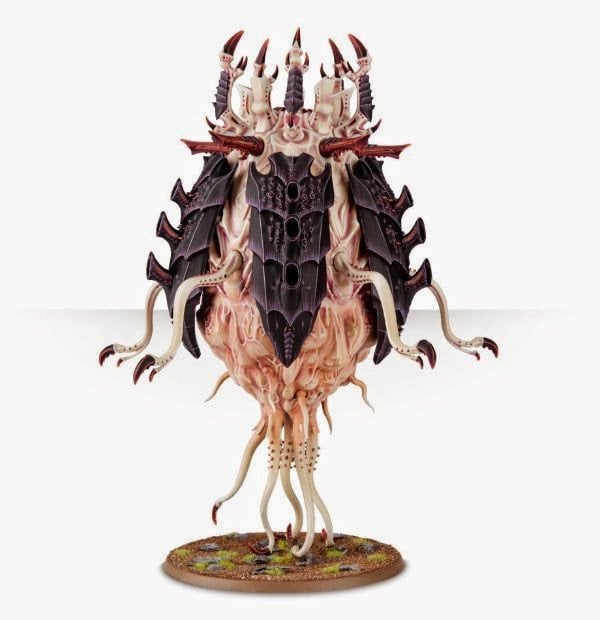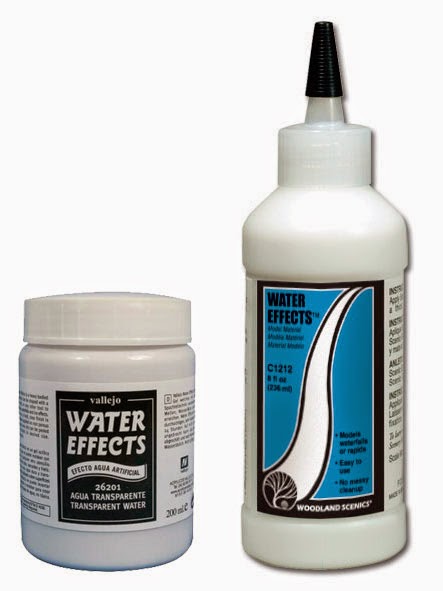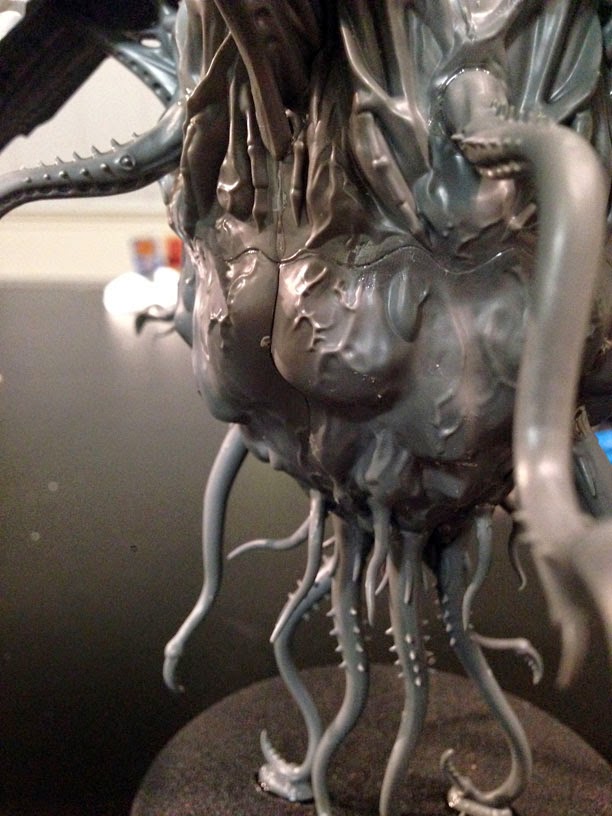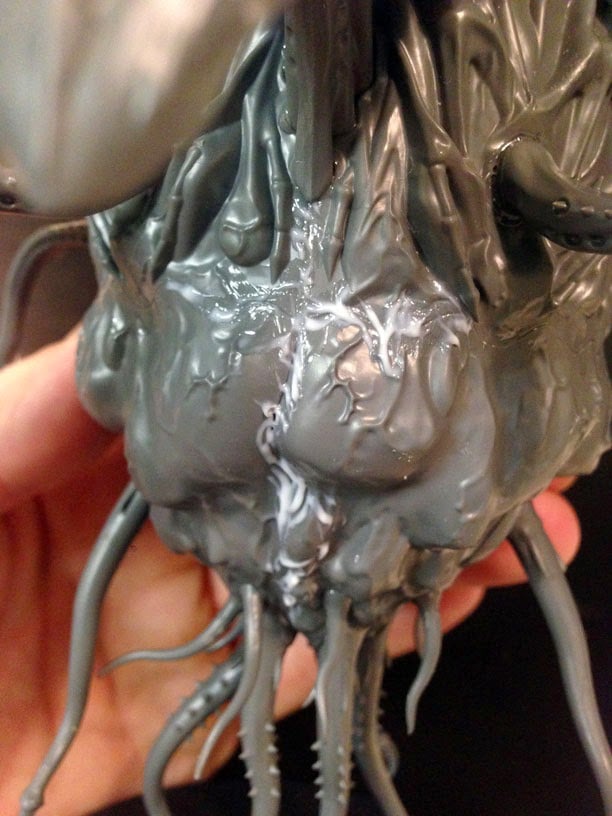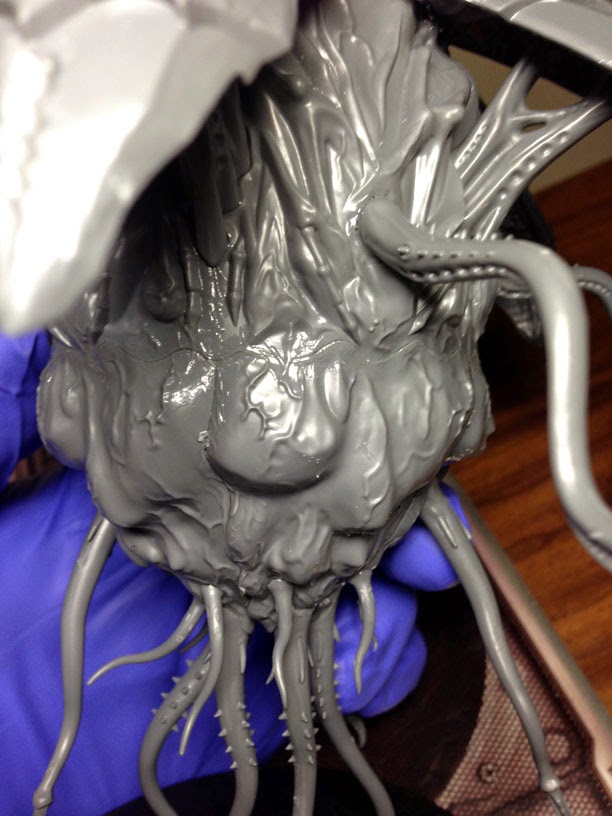HOBBY: Hiding Seams On Organic Models.
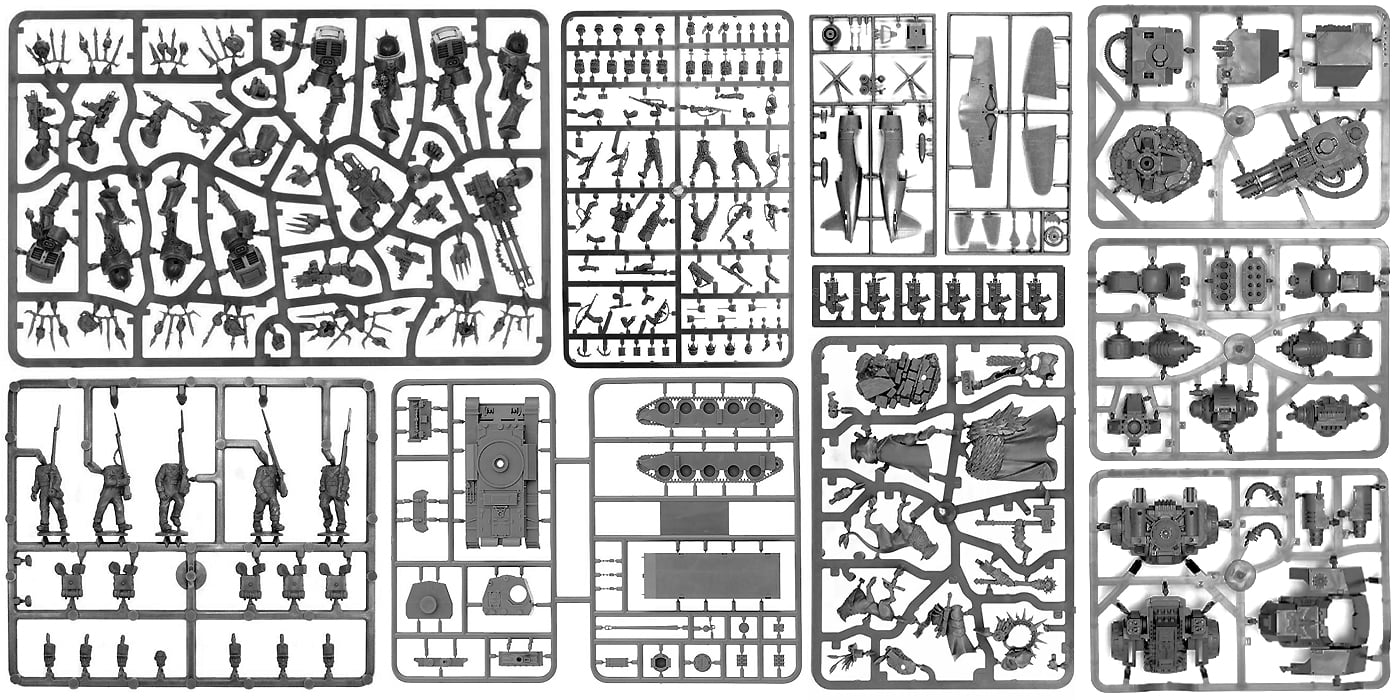
Let’s talk about how to quickly hide model seam lines on organic models. It’s easier than you think!
It’s quick and easy and you’ll save yourself a ton of frustration scraping plastic and kneading little strips of green stuff.
When I first saw the new Tyrannocyte model I was struck with how disgusting/cool it looked, and then by what a nightmare hiding the multiple seam lines would be. The modelers at GW’s do an outstanding job of hiding the seam lines, and the recent advances in CAD assisted design have placed them in a way to reduce how obvious they will be; but those of us that have put a few models together over the years know that a few (fairly) straight seam lines will detract from the organic effect of this disgusting flesh-sac, especially once you start drybrushing and washing the model.
Hiding the lines is a lot easier with tanks and power armor, I usually just scrape the surface flush with a knife, or in extreme cases use a modeling putty like Milliput or green stuff to hide seams and miscast areas. But the scraping method is difficult for a model like this due to the raised edges on either side of the seam. Not to mention a perfectly flat surface on an undulating/veiny model looks conspicuous in its own way. Modeling putty can hide seams but you’re going to have to invest a lot of time and effort blending it in, and then modeling details to match the surroundings so it’s not another smooth patch on your model.
Way too much time and effort wasted when you could be building & painting instead.
So to fix our problem we’ll be using water effects. Different companies make different formulations, which vary in how they behave. The most useful ones I’ve found are Vallejo Water Effects & Woodland scenics Water Effects. The Vallejo product comes in a few pre-mixed colors or transparent, but since we’re going to be paining over it the color in this technique the color really doesn’t matter. The major difference between the two products is that the Vallejo is a little softer, while the Woodland is a little more sticky lending it to more fine details. Since we’re trying to mimic the surface of the Tyrannocyte the Vallejo would be the better choice this time (I’ll explain more about other applications at the end of the article).

